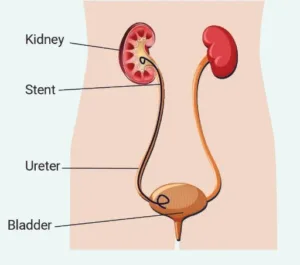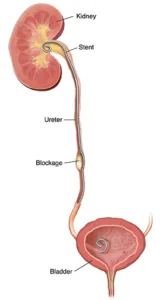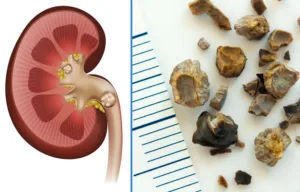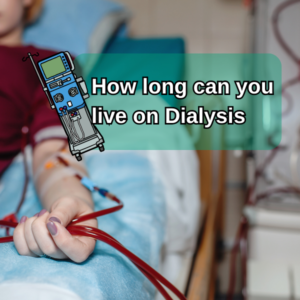+90 533 813 89 77
info@bookingforhealth.com

How to sleep with a kidney stent?
What is a Kidney Stent?
Kidney stents are small tubes placed in the urinary tract to assist with urine flow and healing after certain medical procedures. A kidney stent, also known as a ureteral stent, is a medical device in the form of a thin, flexible tube typically made of medical-grade plastic or silicone. It is inserted into the urinary tract to aid in the passage of urine from the kidneys to the bladder or to alleviate urinary obstructions and maintain proper urine flow.

How to sleep with a kidney stent?
Simple instructions on how to sleep comfortably with a kidney stent:
- Lie on your side or stomach. This will help the stent put more pressure on your bladder and make it easier for urine to flow.
- Drink plenty of water before bed. This will help thin out your urine and make it easier for the stent to pass.
- Pee before bed and after you wake up. This will help drain any urine that has built up in your urinary tract.
- Take a hot shower. Hot water can help reduce pain and discomfort.
- Take painkillers. Take the pain reliever that your doctor recommended before bed.

Things to avoid when sleeping with a kidney stent:
- Don’t put the tip of your stent into your urethra. This can cause pain and discomfort.
- Don’t pull or push on the tip of your stent. This could cause the stent to move out of place.
- Don’t squeeze the tip of your stent. This can cause pain and discomfort.
If you have any questions or concerns about sleeping with a kidney stent, please talk to your doctor.
Need to free consultation?
Managing Kidney Stent Pain: Practical Tips
Dealing with kidney stent pain can be challenging, but there are strategies to help you find relief.
- Smart Hydration: Staying adequately hydrated is important, but watch your fluid intake, especially before bedtime, to reduce nighttime bathroom trips.
- Pain Relief Options: Consult your healthcare provider for pain management solutions. They can prescribe effective medications or recommend over-the-counter remedies to ease your discomfort.
- Sleeping Positions: Discover a comfortable way to sleep. Sleeping on your back or on the opposite side of the stent can help alleviate pressure and improve your rest.
- Pillow Support: Using extra pillows under your knees or lower back can provide additional comfort and relieve pain.
- Moderate Activity: Avoid strenuous activities that could worsen your pain. Give your body the necessary rest to aid in the healing process.
- Seek Professional Guidance: If your pain persists or becomes severe, don’t hesitate to reach out to your healthcare provider. They can assess your condition and recommend appropriate interventions.
Remember, kidney stent pain varies from person to person. What works for you might not work for others. To discover the best way to manage your pain, follow these tips and collaborate with your doctor. Successfully addressing stent pain can greatly improve your comfort and well-being.
How long will my kidney hurt after stent removal?
After the stent is removed, it’s normal to have some discomfort or mild kidney pain for a few days. But don’t worry, this pain should gradually go away. If it continues or becomes severe, be sure to reach out to your healthcare provider.
How to relieve kidney pain after stent removal?
“Ease kidney pain after stent removal by staying hydrated, using prescribed pain relief, getting plenty of rest, watching for signs of infection, and following your doctor’s guidance for a smoother recovery.”
A stent for kidney stones?
A stent for kidney stones is a small, flexible tube that is placed in the ureter (the tube connecting the kidney to the bladder) to help treat or prevent kidney stone blockages. The stent allows urine to flow freely from the kidney to the bladder, bypassing the stone.

What are the side effects of a kidney stent?
- Pain in the sides and groin, which may get worse when you urinate.
- Blood in the urine, which may be light pink, reddish, or even brownish. If bleeding becomes heavy, call your doctor or go to the emergency room right away.
- Feeling the need to urinate often and urgently.
- Pain, pressure, or a burning sensation when you urinate or move.
- Bladder spasms.
- Leakage of urine because you can’t get to the toilet in time.
- Feeling like you haven’t completely emptied your bladder.
- Nausea and occasional vomiting.
How long does a stent stay in for kidney stones?
How long a kidney stent stays in for kidney stones varies from person to person, depending on their individual medical situation. Kidney stents are usually temporary, and are left in for a few days to several weeks. The goal of the stent is to open up the blocked ureter, help the kidney stone pass, and allow the ureter to heal.
Your doctor will decide how long your stent needs to stay in based on the size and location of the kidney stones, how blocked your ureter is, and your overall health. It is important to follow your doctor’s instructions and attend all of your follow-up appointments so they can check if the stent needs to be removed or replaced.
Placement of Kidney Stents
The placement of a kidney stent typically involves a medical procedure. It can be inserted either through minimally invasive techniques, such as cystoscopy (a thin tube with a camera is guided through the urethra into the bladder) or percutaneously, where the stent is placed through a small incision in the skin directly into the kidney. The choice of insertion method depends on the patient’s specific condition and the judgment of the healthcare provider.
Complications of Kidney Stents
While kidney stents are generally safe and effective, there are potential complications associated with their use. These can include urinary tract infections (UTIs), stent discomfort or pain, hematuria (blood in the urine), stent migration (movement out of its intended position), and, rarely, injury to the urinary tract during placement. It’s crucial for patients to report any unusual symptoms or discomfort to their healthcare provider promptly.
Kidney Stent Pain and Relief
Pain and discomfort are common side effects after kidney stent placement. This can result from irritation of the bladder or ureter by the stent. Patients are often prescribed pain relievers, and sometimes medications to reduce bladder spasms, to help manage this discomfort. Drinking plenty of water is also recommended to help alleviate symptoms and prevent urinary tract infections.
Care of Kidney Stents
Taking care of kidney stents involves two important things: keeping the area around the urinary opening clean and making sure you drink enough water. To avoid infections and other problems, just follow your doctor’s advice on how to care for your stent.
Removal of Kidney Stents
Kidney stents aren’t meant to stay in permanently. Your healthcare provider will decide when to remove them. Taking them out is usually simpler than putting them in. It can be done in the office with a quick cystoscopy, or sometimes as a short outpatient procedure. When to remove the stent depends on why it was put in and how well you’re responding to treatment.
Kidney Stents and Benign Prostatic Hyperplasia (BPH)
In cases of BPH, kidney stents can serve as a supportive measure to improve urinary flow. BPH, characterized by the enlargement of the prostate gland, can lead to urinary obstruction. By keeping the urethra open, stents help alleviate this obstruction, providing relief to the patient.
Kidney Stents and Kidney Stone Treatment
Kidney stents are vital in treating kidney stones, which are painful solid mineral deposits in the kidneys that can block the urinary tract. Stents create a temporary pathway to help these stones pass more easily, reducing pain and discomfort.
Kidney Stents and Urinary System Issues
Kidney stents are used to fix and keep your urine flowing correctly when there are problems like narrowings or blockages in your urinary tract. These issues can happen because of things like tumors, strictures, or scar tissue. Stents help by opening up the passage for urine to move normally.
Kidney Stents and Complicated Urinary Infections
In cases of complex urinary infections, like those linked to structural issues or blockages, kidney stents can help manage these infections. They work by ensuring urine drains correctly and reducing the chances of recurring infections
Research and Developments in Kidney Stents
Ongoing research and development in the field of kidney stents focus on enhancing their design, materials, and placement techniques. The goal is to improve patient comfort, reduce complications, and refine their utility in various urological and nephrological conditions. Clinical trials and studies continue to explore innovative approaches to kidney stent technology.



